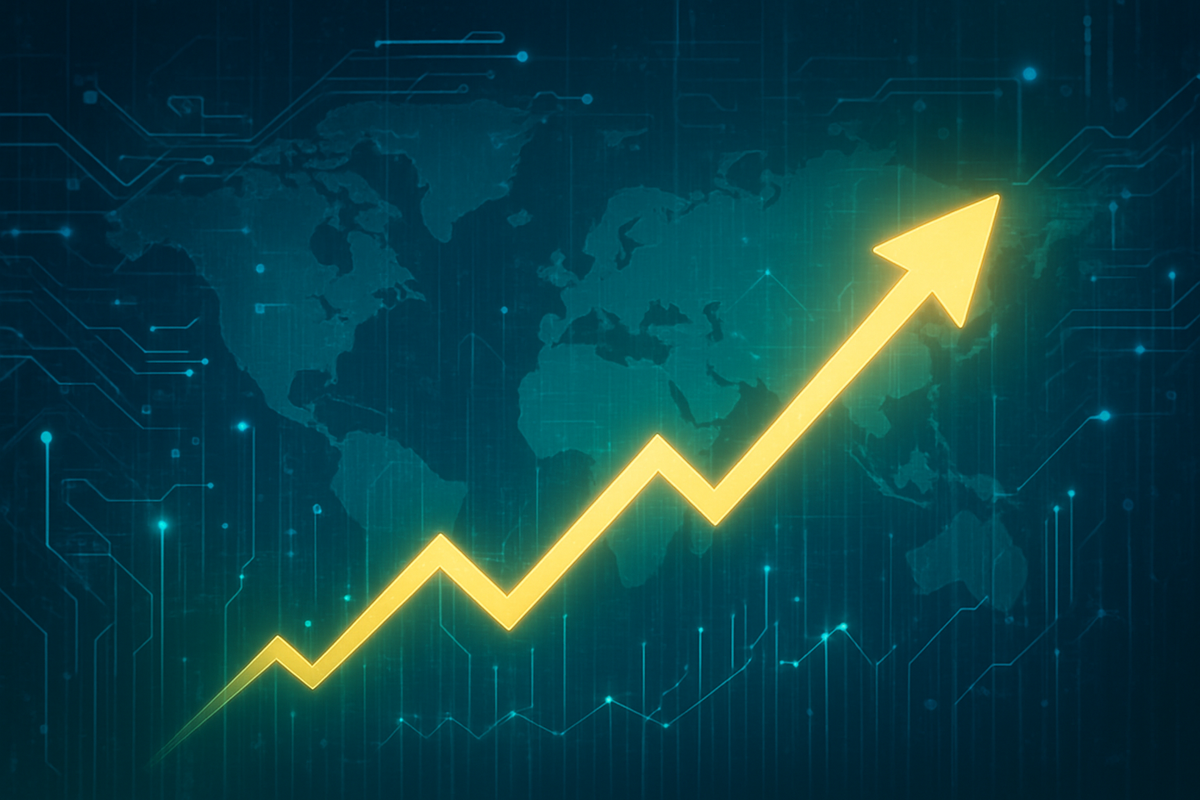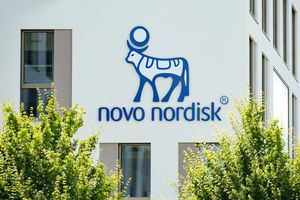
November 19, 2025 – The global financial markets are currently experiencing a significant advance, largely propelled by a powerful resurgence in US technology shares. This tech-driven optimism, fueled by the accelerating Artificial Intelligence (AI) revolution, is exerting a profound influence across international indices, from the bustling exchanges of Asia to the established bourses of Europe. While 2025 has seen broad-based market gains, the sheer momentum generated by a handful of American tech giants underscores a pivotal shift in investment focus and economic drivers.
This renewed vigor in the US tech sector, particularly among the "Magnificent Seven" companies, has become the engine of a global rally, pushing major indices to new highs and fostering an environment of both excitement and caution. As investors grapple with unprecedented valuations and the transformative potential of AI, the immediate implications involve a careful re-evaluation of growth prospects, a surge in capital expenditure for AI infrastructure, and a heightened awareness of potential market volatility as the industry evolves.
The Engine of Growth: Deep Dive into the Tech Resurgence
The current global market advance is intricately linked to the extraordinary performance of a select group of US technology firms, collectively known as the "Magnificent Seven": Apple (NASDAQ: AAPL), Microsoft (NASDAQ: MSFT), Amazon (NASDAQ: AMZN), Alphabet (NASDAQ: GOOGL), Meta Platforms (NASDAQ: META), Nvidia (NASDAQ: NVDA), and Tesla (NASDAQ: TSLA). These companies have not only consistently outpaced the broader market but have also become the primary beneficiaries and drivers of the burgeoning AI boom. Their collective market capitalization, which reached approximately $12.3 trillion by early 2024 and now constitutes a record 37% of the S&P 500's value, surpasses the equity markets of entire nations.
The timeline of this tech resurgence is closely tied to the rapid evolution of AI. The spark for this revolution is widely traced back to November 2022, with OpenAI's release of ChatGPT 3.0, which thrust generative AI into mainstream consciousness. Throughout 2023, the Magnificent Seven collectively climbed an impressive 75.71%, a trend that continued into 2024 and 2025. Nvidia (NASDAQ: NVDA), in particular, emerged as a frontrunner, with its GPUs becoming indispensable for AI training and inference, leading to its market valuation soaring to nearly US$5 trillion by November 2025. Key milestones in 2025 include Microsoft (NASDAQ: MSFT) surpassing a $4 trillion market capitalization in July, driven by strong AI demand for its Azure cloud services, and Alphabet (NASDAQ: GOOGL) hitting the $300 mark for the first time on November 19, following the launch of its Gemini 3 AI model. Amazon (NASDAQ: AMZN) also saw its shares surge over 11% in early November 2025 due to robust AI-driven growth in Amazon Web Services (AWS).
Initial market reactions have been largely euphoric, marked by massive stock surges and an outsized influence on indices like the S&P 500 and Nasdaq Composite. However, as of November 2025, this enthusiasm has been tempered by growing apprehension about an "AI bubble," reminiscent of the dot-com era. This concern has led to increased market volatility, with some Magnificent Seven members experiencing dips despite significant AI deals. For instance, on November 18, Microsoft (NASDAQ: MSFT) and Nvidia (NASDAQ: NVDA) saw their stocks fall despite a multi-billion-dollar cloud infrastructure deal involving AI developer Anthropic. Investors are increasingly scrutinizing the profitability of massive AI investments, with companies like Meta Platforms (NASDAQ: META) facing pressure when profits lag behind capital expenditures, and critics like Michael Burry raising alarms about potential accounting fraud related to AI spending.
Navigating the AI Wave: Winners, Losers, and Strategic Shifts
The US tech-led market advance and the AI boom are creating a clear delineation of winners and losers among public companies, fundamentally reshaping competitive landscapes across the globe.
The Clear Winners: At the forefront are the core AI infrastructure providers. Nvidia (NASDAQ: NVDA) remains the undisputed leader, with its GPUs being the backbone of AI development, driving "off the charts" demand for its Blackwell platform. Microsoft (NASDAQ: MSFT) is a strong contender, leveraging its Azure cloud services for AI infrastructure and integrating AI, such as Copilot, across its vast enterprise software ecosystem. Its capital expenditures have reached nearly $35 billion in a single quarter to support AI. Amazon (NASDAQ: AMZN) is similarly benefiting from the AI surge through Amazon Web Services (AWS), which has seen significant revenue jumps due to cloud computing demand for AI. Alphabet (NASDAQ: GOOGL), with its "full-stack" AI strategy from chip production to model development (Gemini), is well-positioned, as evidenced by its recent stock surge. Meta Platforms (NASDAQ: META) is also a winner, using AI to enhance ad targeting and content recommendations, driving strong advertising revenue growth despite heavy AI infrastructure spending.
Beyond the "Magnificent Seven," several companies in related sectors are thriving. Semiconductor firms like Advanced Micro Devices (NASDAQ: AMD) and Broadcom (NASDAQ: AVGO) are critical suppliers of AI chips and networking solutions. Taiwan Semiconductor Manufacturing Co. (NYSE: TSM), as Nvidia's primary foundry partner, is a major beneficiary. Cloud providers like Oracle (NYSE: ORCL), and computer and network equipment makers such as Super Micro Computer, Inc. (NASDAQ: SMCI) and Dell Technologies (NYSE: DELL), are seeing increased demand for AI-optimized servers and high-speed networking. Utility companies like NextEra Energy (NYSE: NEE) are also poised to win due to the immense energy demands of AI data centers.
Companies Facing Challenges or Needing Strategic Pivots: While part of the "Magnificent Seven," Apple (NASDAQ: AAPL) has been perceived as slower to fully capitalize on the AI boom compared to its peers, causing some investor concern despite its recent "Apple Intelligence" announcements. Tesla (NASDAQ: TSLA), though deeply invested in "physical AI" for autonomous driving and robotics, faces challenges from slowing EV sales and increased competition, leading to stock volatility.
More broadly, industries heavily reliant on human labor for routine tasks face significant disruption. Companies like Teleperformance (EPA: TEP), which relies on call center agents, face direct threats from AI-driven chatbots. Staffing firms such as ManpowerGroup (NYSE: MAN) and consulting giants like Accenture (NYSE: ACN) and Globant (NYSE: GLOB) could see reduced demand for human-led services as generative AI automates tasks like coding, data analysis, and report drafting. Traditional media, publishing, and even parts of the legal and financial sectors are bracing for AI-driven automation that could erode revenue streams and displace jobs. Companies that fail to integrate AI effectively or adapt their business models risk being left behind in this rapidly evolving, tech-centric market.
A New Industrial Revolution: Broader Implications and Historical Echoes
The US tech-led global market advance, driven by the AI boom, represents a phenomenon of wider significance, signaling a "cognitive industrial revolution" that is reshaping global economies and societies. This is not merely a technological upgrade but a fundamental shift comparable to the Industrial Revolution of centuries past, albeit at an unprecedented pace.
The AI boom accelerates several broader industry trends. It is automating cognitive labor, impacting fields from coding and legal services to scientific research, a stark contrast to previous revolutions that primarily mechanized physical tasks. The adoption rate of AI is hyper-accelerated; while past industrial shifts took decades, AI has moved from nascent technology to widespread enterprise adoption within a few years. This is driving massive investment, with global AI spending projected to reach US$375 billion in 2025 and US$500 billion by 2026, contributing significantly to GDP growth. The "insatiable" demand for compute power, data centers, and energy has been likened to a new "coal rush," highlighting the profound infrastructure requirements.
The ripple effects are global and multifaceted. The benefits are highly concentrated, with a handful of US tech giants wielding disproportionate influence, raising concerns about wealth and power concentration. Global supply chains, already vulnerable to geopolitical instability, are being transformed by AI optimization but also face new pressures, particularly regarding the dominance of Taiwan (TWSE: 2330) in advanced semiconductors. Perhaps most significantly, AI is causing substantial labor market disruption, with projections of millions of jobs displaced and new ones created, necessitating "massive reskilling" of the global workforce. Internationally, this has intensified a "tech cold war" between the US and China, leading to a fragmentation of the global order as nations prioritize domestic AI leadership.
Governments worldwide are grappling with regulatory and policy implications. The European Union's AI Act, in effect since August 2025, has established a tiered, risk-based classification for AI systems, with strict requirements and hefty fines. In contrast, the US, under its "America's AI Action Plan" of July 2025, emphasizes a deregulatory approach to accelerate innovation and export its AI tech stack. China maintains a centralized, state-controlled governance model. Antitrust concerns are growing globally, with regulators scrutinizing the market dominance of tech giants and their control over essential AI inputs. Ethical AI, focusing on transparency, accountability, and bias mitigation, is also a critical area of policy development.
Historically, the AI boom draws comparisons to the Industrial Revolutions for its societal impact and the Dot-Com Bubble (late 1990s/early 2000s) for its market exuberance. While both periods saw speculative funding and rapidly rising valuations concentrated in tech, a key distinction lies in the fundamental strength of today's leading AI companies. Unlike many unprofitable dot-com firms, today's AI leaders are established profit-generators with diversified revenue streams and strong balance sheets. Current AI spending is largely funded by profits, suggesting a more robust underlying shift rather than pure speculation, though valuation concerns persist.
The Road Ahead: Opportunities, Challenges, and Future Scenarios
As of November 19, 2025, the trajectory of the global market, heavily influenced by US tech and AI, points to a period of both sustained growth and significant adaptation. Both short-term and long-term possibilities highlight a transformative era.
In the short term (2025-2026), AI investment is expected to continue driving economic growth, offsetting challenges in other sectors. Major US AI firms like Nvidia (NASDAQ: NVDA) and Microsoft (NASDAQ: MSFT) are anticipated to maintain strong performance, though a broader diversification of AI opportunities is likely. Government stimulus, such as the US "One Big Beautiful Bill" enacted in July 2025, is poised to further boost economic activity. The semiconductor and AI infrastructure boom will persist, with significant demand for chips, high-bandwidth memory, and data center capacity. The emergence of "agentic AI"—autonomous systems capable of decision-making—is expected to grow, potentially reaching an $8.5 billion global market in 2026, making SaaS applications more intelligent and personalized.
Looking to the long term (2027-2030 and beyond), AI is projected to add trillions to the global economy, with the overall AI market expanding dramatically. This will be driven by massive productivity gains and exponential growth in AI infrastructure, with global investment in next-generation computing and data centers potentially reaching US$6.7 trillion by 2030. Technological breakthroughs in quantum AI and multimodal systems are anticipated. While the US currently leads, its share of global AI revenue is projected to decrease as other nations develop their own AI capabilities, leading to a more diversified global AI landscape. However, this growth comes with challenges: workforce transformation will necessitate widespread reskilling, and the immense energy and resource demands of AI systems could lead to supply shortages and higher costs.
Strategic pivots are crucial for all stakeholders. US tech companies must shift focus from speculative investments to demonstrating clear ROI and building sustainable AI business models, prioritizing ethical AI and robust cybersecurity. Global companies need to diversify beyond concentrated "US AI mega-caps" and invest in AI-ready workforce development. Governments and regulators must establish comprehensive frameworks for responsible AI governance, address antitrust concerns, and foster international cooperation to prevent global divides.
Market opportunities abound in AI infrastructure, hardware (semiconductors, data centers), vertical-specific AI applications (healthcare, manufacturing), and new AI-native software. The clean energy and infrastructure sectors will also see a massive boom. Challenges include job displacement, ethical and regulatory complexities, intensifying global competition, market concentration, and the environmental impact of resource-intensive AI. Potential scenarios range from an optimistic "Accelerated Global Growth" driven by effective AI management and international cooperation, to a pessimistic "Fragmented and Volatile Market" characterized by speculative bubbles and escalating geopolitical tensions. The most likely scenario suggests "Controlled Disorder and Adaptive Growth," where AI provides resilience amidst challenges, leading to a more diversified but competitive global tech market, with ongoing innovation and policy adjustments managing the inherent complexities.
Conclusion: Investing in an AI-Driven Future
The global market's current trajectory, steered by the resurgence of US technology shares and the profound impact of the AI revolution, marks a pivotal moment in financial and technological history. As of November 19, 2025, this era is characterized by both unprecedented growth and evolving complexities.
Key Takeaways: The "Magnificent Seven" US tech giants have been instrumental in driving global equity gains, intrinsically linked to the AI boom. AI has transitioned into a foundational economic force, attracting massive investments in infrastructure and promising significant productivity enhancements. Despite concerns about elevated valuations, many experts believe the current boom is underpinned by genuine fundamentals and earnings growth, rather than an unsustainable bubble, with AI companies demonstrating strong earnings per share growth.
Market Moving Forward: The outlook for the tech sector and US equities into 2026 remains largely positive, with continued growth anticipated, fueled by robust IT spending and ongoing AI investments. Expectations of Federal Reserve interest rate cuts are set to further stimulate global economic activity. However, caution is warranted, as the full economic impact of AI may take time to materialize, and a "reckoning" on AI hype could occur in 2026 as enterprises demand measurable ROI. Global output growth may also moderate in the early 2030s.
Significance and Lasting Impact: AI is not just a new technology; it is a "foundational amplifier" accelerating progress across virtually all technological domains. Its lasting impact will be transformative, potentially driving down the cost of expertise and significantly disrupting labor markets. The emergence of "agentic AI" signals a deeper integration into operational processes. However, this rapid development also brings critical societal implications, including the risk of widening global divides, and the urgent need for robust ethical frameworks and inclusive global governance to ensure AI's benefits are broadly shared.
What Investors Should Watch For in Coming Months: Investors must remain strategic and vigilant. Monitor companies that demonstrate clear, measurable ROI from their AI investments, moving beyond pilot projects to practical deployment. Keep a close eye on the evolving landscape of AI governance and regulation, particularly the implementation of the EU AI Act, which will influence how companies develop and deploy AI responsibly. Cybersecurity and data privacy will remain paramount. Observe the evolving impact of AI on labor markets, as well as geopolitical and macroeconomic shifts, including central bank policies and trade tensions. While the "Magnificent Seven" have led the charge, consider diversifying portfolios to mitigate concentration risk and explore undervalued foreign markets. Finally, track the unprecedented capital expenditure by tech giants on cloud and AI infrastructure, as this will continue to benefit semiconductor, hardware, and utility companies. The growing use of debt for AI projects is a potential risk that warrants monitoring.
In essence, the US tech-led global market advance and the AI boom represent a profound, ongoing transformation. Balancing optimism with caution, adapting to evolving technological and regulatory landscapes, and focusing on fundamental value will be key for investors navigating this new, AI-driven era successfully.
This content is intended for informational purposes only and is not financial advice


















